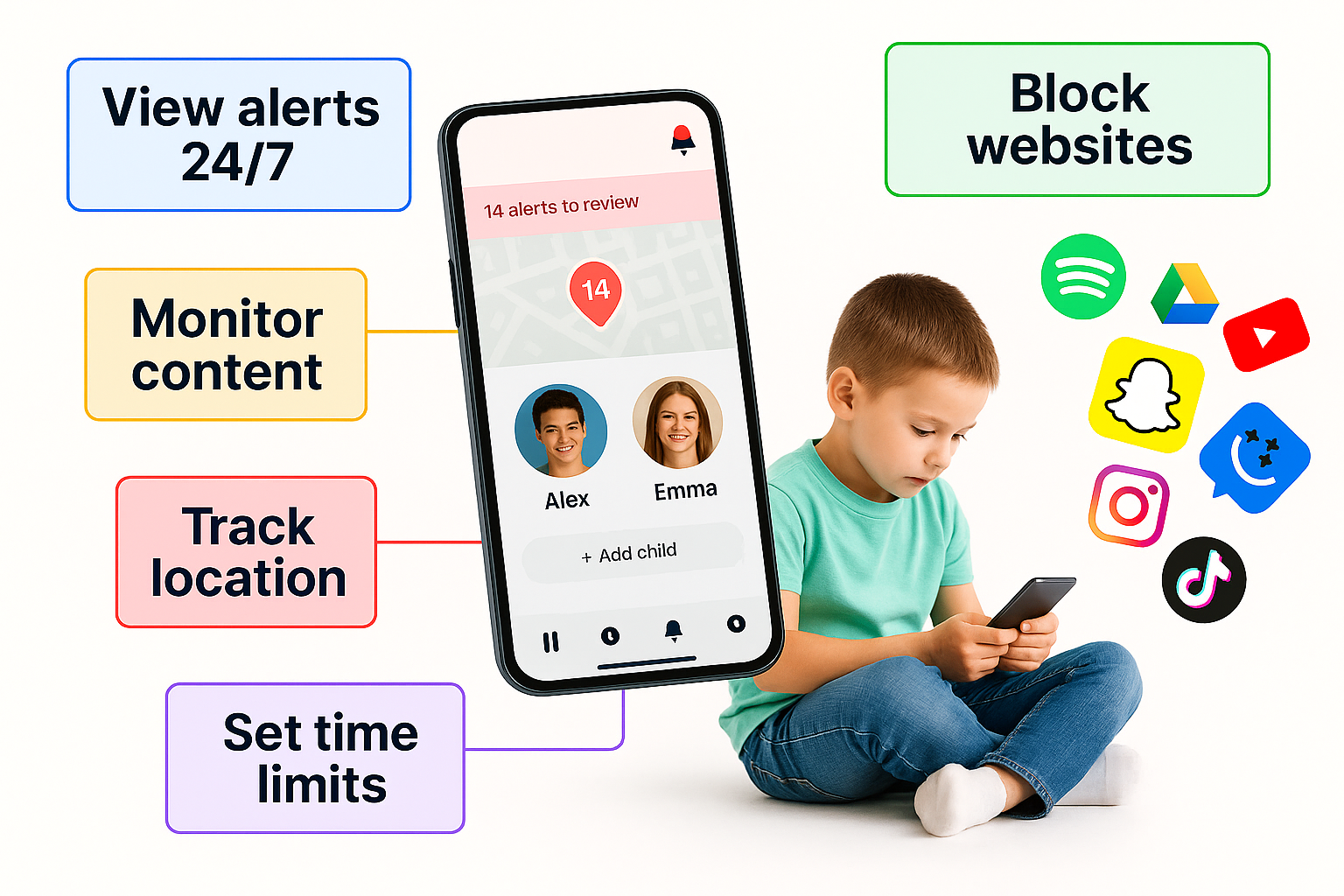📵 Myth vs. Fact: 7 Common Misbeliefs About Kids and Smartphones (And What Parents Should Really Know)
In today’s digital age, there’s no shortage of opinions on kids and technology. From school gates to social media groups, parents are flooded with warnings: "Screens are ruining our children!", "Phones are addictive!", "Smartwatches are just toys!"
The truth? Some of these statements are based on outdated fears or half-truths. Others are completely false.
In this article, we’ll explore 7 of the most common myths about kids and smartphones (or GPS smartwatches)—and uncover the facts every modern parent should know before making decisions about devices, screen time, and digital safety.
Myth 1: “My child doesn’t need a phone or smartwatch until they’re a teenager.”
Fact:
There’s no universal “right” age. Many kids begin walking to school or attending activities without parents well before age 13. A child-safe phone or smartwatch can provide essential communication and location tracking as early as 7–10 years old.
The key is not the age—it’s the type of device and parental involvement. A full-access smartphone? Maybe not. A GPS-enabled smartwatch or limited-function phone with controls? Absolutely appropriate for younger kids.
Myth 2: “All screen time is bad.”
Fact:
Not all screen time is created equal. There’s a difference between 2 hours of mindless scrolling and 2 hours of video-calling Grandma, exploring a drawing app, or completing math games.
It’s less about the minutes—and more about the quality, purpose, and balance.
Devices with parental controls let you guide your child toward positive, educational, or social screen use while limiting the rest.
Myth 3: “If my child has a device, they’ll become addicted.”
Fact:
Addiction doesn’t come from device ownership—it comes from lack of boundaries and unrestricted use. When a child is given a full-featured smartphone with social media, YouTube, and games—all without guidance—yes, the risk of dependency is higher.
But kids with structured screen time, healthy tech routines, and parent-involved rules are much less likely to struggle.
Starting with a child-safe device actually helps build discipline and good habits, not addiction.
Myth 4: “Smartwatches are just expensive toys.”
Fact:
Modern GPS smartwatches for kids are much more than gadgets. They offer:
- Two-way voice calling
- Location tracking and safe-zone alerts
- SOS emergency buttons
- Step tracking and activity reminders
- No access to the internet or app stores
They’re practical tools for early independence and safety—not toys. And they’re often a better first tech device than a phone.
Myth 5: “Parental controls are too complicated to set up.”
Fact:
Most child-focused devices today come with easy-to-use apps for parents. These dashboards let you:
- Approve or block apps with one tap
- Set daily screen limits
- See location history
- Control contact lists
- Set bedtime schedules or school-time lockouts
If you can use social media, you can manage parental controls. It’s far easier than it sounds—and it makes a huge difference.
Myth 6: “Phones isolate kids from real friendships.”
Fact:
Digital tools don’t ruin friendships—how they’re used does. When kids spend hours in isolation scrolling or gaming with strangers, real connection suffers. But when devices are used for calling friends, sending voice notes, or even collaborating on creative apps, connection can grow.
The secret? Set time limits and encourage offline play. A device with restricted social access gives your child a bridge—not a wall—to healthy communication.
Myth 7: “Once I give my child a device, I lose control.”
Fact:
Giving your child a safe phone or smartwatch doesn’t mean giving up control. In fact, with the right tools, you gain more control and insight.
You’ll know:
- Where they are
- Who they’re talking to
- What they’re doing online
- When they’re on the device
And best of all: you’ll be able to have regular conversations about it.
The goal isn’t total restriction. It’s shared responsibility and gradual trust. Smart parenting isn’t about saying “no” forever—it’s about saying “yes” with a plan.
In a world full of noise and misinformation, it’s important to pause and ask: “Is what I believe about tech still true?”
Child-friendly devices are not the enemy. When used with intention, smartphones and smartwatches can support safety, learning, independence, and even family connection.
So instead of avoiding tech out of fear, embrace it wisely—with guidance, structure, and love.

